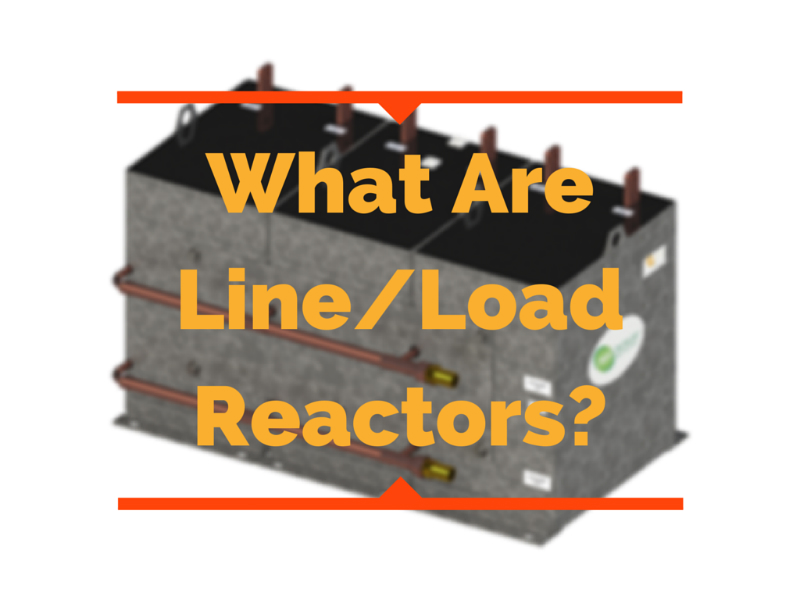What Are Line/Load Reactors?
Line/load reactors are inductors; coils of wire that oppose the flow of alternating current and limit the current that can flow through the circuits into which they are placed. They are used in two principal applications. Load reactors are generally used with motors circuits (load side of a motor drive), while line reactors are used in power distribution (line side of a drive).
The reason line/load inductors can limit current is based on a principle known as reactance. When an alternating current passes through a coil of wire a magnetic field is created around the coil. Because the current flowing alternates between positive and negative values, the strength of the magnetic field changes in concert with the frequency of that current flow. According to Faraday's law, any changing magnetic field will induce a voltage in a nearby conductor, which is exactly what happens in a line/load reactor. That constantly changing magnetic field around the reactor induces a current in the reactor's coil itself that opposes the current already flowing through the coil. That opposition to current flow through the coil is known as inductive reactance. It is measured in ohms and signified by the letter “X.” Reactance for any given inductor is directly proportional to the frequency of the current flowing through it.
Load Reactors Used in Motor Circuits
When a motor is powered “on” an inrush of electrical current flows into the motor because, initially, the windings of the motor appear to have a very low ohmic value, much like a short circuit. Once the motor is running, the reactance of the motor itself comes into play which limits current flow to a steady state value. However, that initial surge can can be six to ten times the motor's steady state current flow. That initial surge can exceed the rating for a given motor's power supply, often causing lights to dim, circuit breakers to trip, and sometimes damaging the power supply itself. Similarly, if the load on a running motor increases to the point where the motor slows or stalls, the same near-zero ohmic resistance will once again cause a large inrush of current. Installing a load reactor between the power supply and the motor limits the current flow to safe, acceptable levels.
Incidentally, load reactors can also be used to protect transformers such as step-up transformers that might be used with a variable frequency motor drive connected to a sine wave filter.
Line Reactors Used in Power Distribution
Power distribution is the process of connecting power from the point of connection—say, into a building—and then to the various electrical devices within. For example, a three phase 120/208 VAC power line entering a factory is routed through circuit breakers and distributed to several circuits. If a device should fail on a particular circuit and present a short, an excessive current will run through that circuit, causing the circuit breaker to trip.
However, events such as turning heavy duty equipment “on” or putting machinery under heavy loads can cause excessive currents that may trip a circuit breaker. Placing a line reactor in between the point of connection and the circuit breaker eliminates large surges and prevents circuit breakers from tripping except in the case of a true short circuit. (Note: If you are using a variable frequency drive (VFD) to control a motor, you would place the line reactor between the power line and the VFD).
In addition, non-linear loads that do not draw power in a pure sinusoidal fashion create harmonics that can feed back into the power source and, in the worst case, into the power grid. Equipment like arc furnaces, elevator motors and other high power motors can contaminate the power waveform with harmonics which, in turn, can damage other equipment. Various standards such as IEEE 519 recommend that equipment should not cause a total harmonic distortion (THD) greater than five percent. Line reactors help reduce THD because, as noted above, the reactance of a wire coil increases with frequency of the signal passing through it. A second harmonic at 120 Hz will be attenuated, while a third harmonic will be attenuated even further.
Both load and line reactors improve power quality while protecting equipment from damage that would be likely to occur if they were not used. Contact us to learn how you can benefit from CTM's load/line reactors, or to get help in selecting the reactor best suited to your application and environment.
 " alt="">
" alt="">